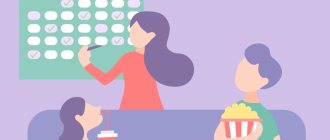Adapted translation of Melissa Chu's article on how to improve your reading quality.
The nature of the book has evolved. Society and technology have become different. Under the influence of a new way of life, the approach to reading has changed. For better or for worse?
Today, the same information can be presented in a variety of formats. When it comes to exactly how we should read, opinions differ.
Choose the right lighting
You need to start analyzing the reading environment with this.
Vision is always the first to suffer when reading in poor lighting. It is necessary to combine general and local lighting. Reading in complete darkness, even if the book is clearly visible, is not recommended. The transition of visual contact from the book to the surrounding environment should be comfortable for the eyes. The fewer changes in light intensity in a room, the better for eye health. What kind of lighting should you choose when reading before bed? There are three main lighting colors:
“warm” light - it can be compared with light on a sunny day, corresponds to 2700-3500 K (Kelvin);
neutral light - average between “warm” and “cold”, 3500-5000 K;
“cold” light - similar to lighting on a cloudy day, 5000-6500 K.
It is not recommended to use “cold” light before bedtime. It inhibits the production of melatonin. You should read only in “warm” lighting. Such light not only creates a cozy atmosphere, but also does not harm the health of the eyes or nervous system.
If the light source is within half a meter of a person, then it is recommended to use 40-60 W bulbs. If the light is located more than half a meter from the reader, then it is better to use 100 W.
The effectiveness of speed reading
Since the 1950s, speed reading has been touted as an effective way to master material quickly. Scientists, psychologists and teachers have come up with methods to improve reading speed using hand tools or eye movements.
At the World Speed Reading Championships, the best participants reach speeds of 1000–2000 words per minute. Six-time champion Ann Jones reads 4,200 words in 60 seconds. These results seem phenomenal compared to the average ability of an adult who advances through text at 300 words per minute.
Popular methods for speed reading:
- Skimming is quickly skimming the text with your eyes to isolate the main points. You don't read every word carefully, but quickly scan the first and last paragraphs, headings, and highlighted passages to find key ideas. Scanning, a similar method, involves skimming text to find specific words and phrases.
- Meta-guiding uses a pointer—either a finger or a pen—to guide the eye along the lines. This helps your eyes move horizontally, focusing on the word you are reading.
- The visual span method uses the visual span to read words in blocks. A person focuses on one central word, and uses peripheral vision to see neighboring ones. It is believed that it helps to read five words at a time.
- Rapid Sequential Visual Presentation (RSVP) is a state-of-the-art method. He uses a reading program that shows words one at a time. You can choose the speed at which they will be displayed on the screen.
Although many readers adhere to these methods, their effectiveness is controversial. When skimming, details are lost. On the other hand, skimming and scanning help you quickly learn a topic, and you can then read the relevant sections in more detail.
The author of the book “Psychology of Reading,” Keith Rayner, rejects speed reading methods. He explains that we are limited by the anatomy of the eyes and the brain's ability to process information. To save time, some methods are based on subvocalization - stopping the mental voicing of words. Reiner claims that when you speed read, the level of memorization and comprehension of what you read decreases significantly.
World Championship participants demonstrate a reading comprehension level of about 50%. For Ann Jones, the figure is 67%.
Regardless of the speed reading method used, comprehension is always sacrificed for speed.
This isn't always a bad thing, depending on what you're reading. If you are looking through dry documentation to understand the key points, it makes sense to use skimming. The RSVP method works when you are introduced to a short, easy-to-understand section of the book. The author prefers to read with a pen, using it as a guide for the eyes.
But it makes no sense to use speed reading methods if you have complex material in front of you or a book that you want to reflect on and savor every chapter.
Install the light on the right side
Near-ideal conditions in terms of temperature range and light source location.
Too “cold” light, located vertically.
It is important to know that the light should always be located at the top and side. Then the pages of the book will be well lit. If a person is right-handed, then place the light on the left. If you are left-handed, then you need to sit so that the light source is on the right. The light should not shine directly into the eyes.
Read in the correct posture
And now more about the position in which reading will be safe for health. Many people like to read before going to bed, lying right on the bed. But it's not right. When a person lies on his back, his gaze is directed upward. This increases the load on the eye muscle, which leads to worsening vision. It’s also difficult to maintain the required distance from the eyes to the book in this position. It is unlikely that anyone will be able to hold a book on outstretched arms for long. Yes, and it’s not very convenient. And, of course, the spine suffers.
Switch to e-books
No matter what anyone says, the paper book is gradually dying out, turning into something like a vinyl record - a pleasure for fans. Reading in a reader is easier, simpler and much cheaper. For a reading enthusiast, the reader pays for itself in about two months. It’s hard to calculate how many trees you’ll save.
These are my simple rules and laws. Once you start reading, it is impossible to stop. I'll tell you this for sure. And one more thing: as the unknown designer Artemy Lebedev once said, every successful person is, first of all, the books he read on time.
Recommended by topic
“Sleep debt” – what does this strange concept mean and how to avoid the consequences Let’s figure out how harmful it is to regularly sleep on your stomach
The neck is tense, tilted forward, bent in the maximum position - if you regularly read in this position, this is harmful to your health.
It’s good if the room has a designated reading area. But if there is no such place, then it is recommended to read while sitting upright on a comfortable chair or sofa, leaning your back. If you sit at a table, you need to use a comfortable chair that is not hard or has a curved back. It is not recommended to sit with your legs tucked under you or twisted in an unnatural position.
If a person reads while lying on the bed, then there is no need to lie down on a flat surface. Many beds have high headboards. You can place several pillows under your back to achieve a semi-sitting position.
Share your emotions from what you read
The best way to formulate your opinion is to write down your thoughts. Sit down, drink tea and carefully analyze the plot of the book , evaluate the usefulness of the information, remember the impressions that washed over you after reading the work. Highlight the most useful thoughts.
If you feel ready, then feel free to start writing a review. In the modern world, almost any social network is suitable for this. It's great if you have your own personal blog. When writing, be sure to use your favorite quotes from the book, wording, and valuable thoughts. Perhaps previously read literature will come to your aid, with which you can draw a parallel.
Sharing your thoughts with other readers is a very rewarding experience. You can discuss together a detail that worries you, or find an answer to a nagging question.
5. Choose a paper version of a book, not a tablet or phone
A paper version of a book is the best solution for preserving human vision. Printed letters are perceived by the eyes much better than modern gadgets. A phone or tablet is not intended for reading. And you especially shouldn't use them before bed. A bright light source from the phone excites the nervous system and impairs vision.
Recommended by topic
How many hours before bedtime can you exercise and how?
Most importantly, you need to use books for reading that use modern e-link light reflection technology. The eyes perceive light that does not dazzle or harm vision. A bright glow from a computer or phone penetrates directly into the eyes.
Backlight, resolution, contrast and font - each must be adjusted individually for his vision. It is strictly forbidden to read an e-book in the dark. You also need to take a break from reading for 20-30 seconds every 10-15 minutes. The distance to the eyes should also be 35-40 cm.
The main trick to reading more
When people ask me how I manage to read so many books, they usually expect some kind of speed reading technique that will help their brain swallow books whole.
Speed reading does play a role in my reading (more on that later), but it's not my biggest secret. Move closer. I will whisper to you the secret of how to read more books. Ready? You need to spend more time reading.
I spend a lot of time reading as it is part of my job. To prepare for the podcast, I'm reading a book written by my guest. When I write articles, I read books for research. Reading is among my job responsibilities.
Being surprised by how many books I read in a year is like being surprised by how many leaking faucets a plumber fixed in a year. It's not that impressive when you have a job like this.
Taking all this into account, in addition to the books I read last year to work on our blog, I still manage to read 2-3 books a month for pleasure. That's over two dozen non-work related books in 12 months. I think that most people, even with the busiest schedules, will be able to digest this amount in a year.
It turns out that the first secret to reading more books is to spend more time reading. Where can I find time?
Choose the right book genre
An important aspect for proper reading before bed is the choice of book. Before a night's rest, you need to get into a calm mood. Therefore, books from the thriller, detective, and horror genres are not suitable for reading. All these genres excite the imagination, excite the nervous system, and cause insomnia. It is also not recommended to read scientific and philosophical literature, as brain activity will be stimulated by the arrival of new information.
Fiction is suitable for quiet reading before bed. Psychologists advise reading something kind, calm, pleasant, and romantic. All this relaxes a person, relieves tension, and prepares the brain for sleep.
Keep reading routine
This question also worries many. After all, it happens that a book is so fascinating that it is impossible to stop reading. But before going to bed, you shouldn’t overuse reading, otherwise it may turn out that you won’t be able to fall asleep for a long time. Or you might even end up with insomnia. Therefore, before a night's rest, it is recommended to read no more than 30-60 minutes.
Don't forget to take stock
Reading a book correctly means organizing the information received into shelves in your head. Mentally write a report on what you read, highlighting the most important: “What did I read?”, “What happened?”, “What caused this outcome?”, “What did the events that happened teach me and were they interesting?”, “Do I agree?” Am I with the author’s point of view?”, “What conclusions can I draw?”











